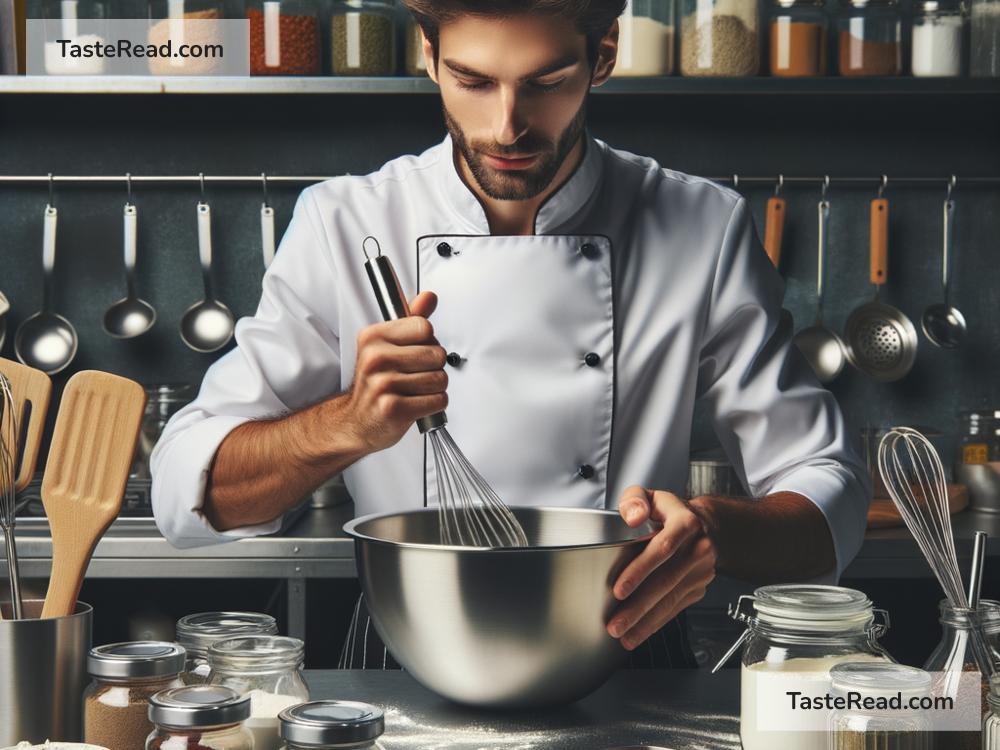Decoding Kitchen Lingo: Simplifying Basic Cooking Terms for Beginners
Learning your way around the kitchen is like learning a new language. From “sauté” to “simmer,” cooking terms can seem daunting to beginners. But fear not! Understanding these terms can turn your cooking experience from a chore into an enjoyable creative process. Here’s a simplified glossary of basic cooking terms to help you become a culinary linguist in your kitchen.
1. Bake: Essentially, baking means cooking food in an oven. This method is usually used for bread, pastries, cakes, and casseroles. You place your dish in the oven and let the dry, hot air cook it evenly. Think of baking as giving your food a warm hug until it’s perfectly done.
2. Boil: Boiling is when you heat water until it reaches a temperature where bubbles break the surface rapidly. It’s a common method for cooking pasta, vegetables, or eggs. Once the water starts dancing with bubbles, you know it’s boiling and ready for whatever you plan to throw in.
3. Simmer: Simmering is a gentler version of boiling. You’ll see tiny bubbles, but it’s not as vigorous. This method is great for soups, sauces, or anything you want to cook slowly to meld flavors without breaking apart delicate ingredients.
4. Sauté: Imagine your pan is a mini trampoline for your food. Sautéing means cooking food quickly in a small amount of oil or butter over high heat, tossing it around frequently. This method is fantastic for veggies or meats that you want to cook through while maintaining a slightly crispy exterior.
5. Broil: Broiling involves cooking food with high heat from above. It’s like sunbathing for your food, where it gets a nice, quick tan (or char) from the top down. This method is excellent for melting cheese on top of dishes or getting a crispy skin on meat or fish.
6. Roast: Similar to baking, but typically at higher temperatures, roasting is all about surrounding your food with hot air in the oven. Meats and vegetables caramelized through roasting develop deep, rich flavors and a crispy outer layer that’s quite irresistible.
7. Blanch: Ever taken a hot bath followed by a cold shower? That’s blanching for food. It involves briefly cooking vegetables in boiling water and then plunging them into ice-cold water to stop the cooking process. This method helps retain brilliant colors, crispness, and nutrients.
8. Grate: Grab a grater, and let’s make some food snow! Grating is a technique where you rub food (like cheese or carrot) against a grater to get fine shreds. It’s a quick way to break down ingredients that melt easier or integrate more seamlessly into dishes.
9. Zest: Zest brightens dishes with a pop of flavor. Using a zester or a grater, you scrape off the colorful outer skin of citrus fruits like lemons, limes, or oranges. Just be careful to avoid the bitter white pith underneath.
10. Julienne: Ever admired those matchstick-like vegetable strips in fancy dishes? That’s julienne. It’s a cutting technique where you slice vegetables or fruits into thin, uniform strips. Perfect for stir-fries or garnishes, it’s a simple way to elevate your dish’s presentation.
11. Whip: Whipping is all about incorporating air into ingredients to make them light and fluffy. Whether you’re whipping cream or egg whites, the goal is to beat rapidly until the mixture is voluminous and soft peaks form. It requires some arm strength (or a mixer) but yields deliciously airy results.
12. Fold: When delicacy is key, folding is your friend. It involves gently combining a light, airy ingredient (like whipped cream) with a heavier mixture, using a spatula in a delicate lifting and turning motion. This method avoids deflating the air you’ve worked so hard to incorporate.
13. Knead: Bread enthusiasts, this one’s for you. Kneading is a method of mixing dough by hand (or machine) to develop gluten, which gives bread its structure and chewiness. It’s a bit of a workout but deeply satisfying when you feel and see the dough becoming smooth and elastic.
Understanding these cooking terms can dramatically improve your kitchen confidence and expand your culinary capabilities. Cooking is an art and a science but, most importantly, an expression of care. With this basic kitchen lexicon, you’re now better equipped to tackle recipes and experiment with flavors. Remember, every masterchef once started as a beginner, and with practice (and a bit of patience), you’ll find your unique rhythm and style in the kitchen. Happy cooking!


